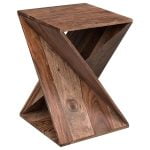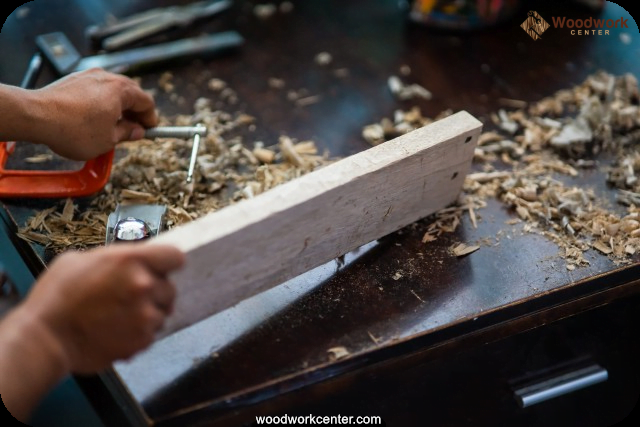Woodworking clamps are essential tools for any beginner looking to delve into the world of woodworking. These versatile devices are crucial for securing materials in place while gluing, nailing, screwing, or sawing. In this article, we will explore the different types of woodworking clamps suitable for beginners, how to choose the right clamp for your project, proper maintenance and care tips, essential safety precautions, DIY projects to try out, common mistakes to avoid, and recommendations for affordable yet quality options.
Whether you are a novice woodworker or looking to expand your skills in the craft, understanding the basics of woodworking clamps is fundamental. From bar clamps to pipe clamps, c-clamps to spring clamps, each type serves a specific purpose in woodworking projects. Learning about the various options available will help you make informed decisions when selecting the right clamp for your needs.
By mastering the art of using woodworking clamps effectively and efficiently, you can elevate your craftsmanship and create impeccable pieces. Proper maintenance and care of your clamps are also crucial in ensuring their longevity and performance. Additionally, following essential safety tips when working with these tools is paramount to prevent accidents and injuries. Stay tuned as we delve deeper into the world of woodworking clamps and discover new ways to enhance your skills in this fulfilling craft.
Types of Woodworking Clamps
Woodworking clamps are essential tools for any beginner woodworker looking to tackle projects with precision and accuracy. With a wide variety of clamps available, it can be overwhelming to choose the right one for your specific needs. Here is a comprehensive guide to the types of woodworking clamps that are commonly used by beginners:
- C-Clamps: These versatile clamps are shaped like the letter C and have an adjustable screw mechanism to tighten or loosen the grip. They are ideal for holding together two pieces of wood during glue-ups or securing materials to a workbench.
- Bar Clamps: One of the most popular types of woodworking clamps, bar clamps have a long metal bar with movable jaws that can be adjusted along its length. They provide strong, even pressure over a large surface area, making them perfect for larger projects.
- Spring Clamps: Simple and easy to use, spring clamps have a hinged design with spring-loaded jaws that can be opened and closed with one hand. They are great for securing lightweight materials or temporarily holding pieces in place.
When starting out in woodworking, it’s important to consider the type of project you will be working on before investing in woodworking clamps. Each type has its own strengths and limitations, so having a variety of clamps in your toolbox will give you the flexibility to handle different tasks effectively.
For beginners on a budget, it’s recommended to start with a few basic woodworking clamps such as C-clamps or spring clamps before expanding your collection. As you gain more experience and tackle more complex projects, you can gradually invest in specialized clamps like parallel jaw clamps or pipe clamps. Remember that proper technique and careful selection of woodworking clamps will ensure successful outcomes in your woodworking endeavors.
Choosing the Right Woodworking Clamp for Your Project
Woodworking clamps are indispensable tools for any woodworking project, as they help hold pieces of wood together securely while the glue dries. With a variety of woodworking clamps available in the market, choosing the right one for your project can be overwhelming, especially for beginners. Here’s a comprehensive guide to help you navigate through the different types of woodworking clamps and select the most suitable one for your woodworking endeavors.
When starting out in woodworking, it is essential to understand the various types of clamps and their specific uses. Here are some common types of woodworking clamps that are recommended for beginners:
- Bar Clamps: These versatile clamps are ideal for a wide range of projects and provide even pressure distribution.
- C-Clamps: Perfect for securing smaller pieces of wood or metal, these clamps have a simple design and are easy to use.
- Spring Clamps: Convenient and lightweight, spring clamps are great for holding materials in place temporarily.
Before deciding on which woodworking clamp to use for your project, take into consideration factors such as the size and weight of your workpiece, as well as the pressure required to hold it securely. Additionally, think about the accessibility of the clamp during the assembly process and how many clamps you may need to ensure proper alignment and bonding.
As a beginner in woodworking, investing in high-quality woodworking clamps is essential for achieving precise and professional results. While there are affordable options available, it is crucial to prioritize durability and reliability when selecting your clamps. Look for reputable brands that offer a good balance between price and quality to ensure that your clamping tools will last through numerous projects. Remember that having the right woodworking clamp can make all the difference in the success of your woodworking projects.
Proper Maintenance and Care for Woodworking Clamps
Woodworking clamps are essential tools for any beginner in the world of woodworking. They help hold pieces of wood together securely during glue-ups, ensuring a successful and professional-looking project. Proper maintenance and care for your woodworking clamps are crucial to prolonging their lifespan and maintaining their effectiveness.
Regular Cleaning
One key aspect of maintaining woodworking clamps is regular cleaning. After each use, make sure to remove any excess glue or sawdust that may have accumulated on the clamp. This can be done using a damp cloth or brush to wipe down the surfaces of the clamp. You can also use a mild cleaning solution if necessary, but be sure to dry the clamp thoroughly afterwards to prevent rusting.
Lubrication
Another important maintenance task is lubricating your woodworking clamps regularly. Apply a small amount of lubricant, such as WD-40, to the moving parts of the clamp to ensure smooth operation. This will help prevent the clamp from getting stuck or becoming difficult to adjust over time. Make sure to wipe off any excess lubricant to avoid leaving residue on your workpiece.
Storage
When not in use, store your woodworking clamps in a dry and well-ventilated area to prevent moisture build-up that can lead to rust. You can hang them on a pegboard or rack, or keep them in a toolbox specifically designed for clamps.
Avoid stacking clamps on top of each other as this can cause damage to their alignment and functionality. By following these simple maintenance tips, you can keep your woodworking clamps in top condition for years to come.
Essential Safety Tips When Using Woodworking Clamps
When working with woodworking clamps, it is crucial to prioritize safety to avoid any accidents or injuries. Here are some essential safety tips to keep in mind when using woodworking clamps, especially for beginners. First and foremost, always wear appropriate personal protective equipment such as safety goggles, gloves, and ear protection. This will help prevent any potential harm from flying debris or loud noise during the clamping process.
Another important safety tip is to make sure that the clamps are securely tightened before starting any woodworking project. Inspect the clamps for any signs of wear or damage that could affect their performance. It is also advisable to use clamps that are specifically designed for the weight and size of the materials being worked on to ensure stability and prevent accidents.
Additionally, always be mindful of your hand placement when using woodworking clamps. Make sure your hands are clear of the clamping area to avoid getting pinched or crushed by the clamp pressure. It is recommended to use tools such as scrap wood or push sticks to apply pressure on the clamp handles instead of using your hands directly. By following these safety tips, beginners can confidently use woodworking clamps in their projects without compromising their well-being.
Remember that proper training and practice are key to mastering the art of using woodworking clamps safely and effectively. Take your time to familiarize yourself with different types of clamps and their functions before jumping into complex projects. By prioritizing safety at all times and following these essential tips, beginners can enhance their woodworking skills while ensuring a safe working environment throughout their projects.
DIY Projects for Beginners Using Woodworking Clamps
Woodworking clamps are essential tools for beginners looking to tackle DIY projects in the world of woodworking. These versatile tools come in various types and sizes, each serving a specific purpose in securing wood pieces together during different stages of a project. Whether you are building a simple shelf or crafting a coffee table, woodworking clamps play a crucial role in ensuring that your pieces stay aligned and firmly bonded as the glue dries.
One popular DIY project for beginners using woodworking clamps is creating a wooden picture frame. With just a few basic tools and materials, such as wood boards, wood glue, saw, sandpaper, and of course, woodworking clamps, you can easily construct a customized frame for your favorite photos or artwork. By using clamps to hold the corners of the frame together while the glue sets, you can achieve clean and seamless joints that add a professional touch to your finished piece.
Another fun project for beginners that can be enhanced with woodworking clamps is building a wooden plant stand. This project allows you to practice measuring, cutting angles, sanding, and assembling wooden pieces with precision.
With the help of woodworking clamps to secure the legs and shelves in place as you attach them together, you can ensure stability and durability in your plant stand design. This hands-on experience will not only improve your woodworking skills but also give you a sense of accomplishment as you see your creation come to life.
| Project | Description |
|---|---|
| Wooden Picture Frame | Create customized frames for photos or artwork using woodworking clamps for precise joints. |
| Wooden Plant Stand | Build a sturdy plant stand by securing legs and shelves with woodworking clamps for stability. |
Common Mistakes to Avoid When Using Woodworking Clamps
When diving into the world of woodworking, it’s easy for beginners to make some common mistakes when using woodworking clamps. These tools may seem straightforward, but there are some key errors that can occur if not used correctly. By being aware of these mistakes and how to avoid them, beginners can ensure a successful woodworking experience.
Improper Placement of Clamps
One of the most common mistakes beginners make when using woodworking clamps is placing them improperly on the workpiece. It’s essential to carefully consider the positioning of the clamps to ensure even pressure across the entire surface being glued or secured.
Placing clamps too far from the edge or at an angle can lead to uneven pressure, resulting in a weak bond or misaligned pieces. Beginners should take the time to plan out their clamp placement before starting any project.
Over-Tightening Clamps
Another mistake often made by beginners is over-tightening woodworking clamps. While it’s important to apply enough pressure to create a strong bond, excessive tightening can damage both the workpiece and the clamp itself.
It’s crucial for beginners to find the right balance between tightness and avoiding putting too much stress on their materials. Using a clamp with a built-in pressure indicator or simply being mindful of how much force is being applied can prevent this common error.
Neglecting Clamp Maintenance
Many beginners overlook the importance of proper maintenance and care for their woodworking clamps. Failure to clean and lubricate clamps regularly can lead to rust, decreased functionality, and ultimately shorter lifespans for these essential tools.
Beginners should make it a habit to clean their clamps after use, remove any excess glue or debris, and store them properly in a dry environment. Regular maintenance will not only prolong the life of the clamps but also ensure they perform at their best when needed for future projects.
By keeping these common mistakes in mind and actively working to avoid them, beginners can improve their woodworking skills and achieve better results with their projects using woodworking clamps. With practice and attention to detail, mastering the art of clamping in woodworking will become second nature for enthusiasts looking to elevate their craftmanship.
Recommendations for Affordable and Quality Woodworking Clamps for Beginners
When it comes to woodworking, having the right tools is essential for a successful project. For beginners looking to explore the world of woodworking, investing in quality clamps is a must. Woodworking clamps are versatile tools that help hold pieces of wood together securely during the gluing or nailing process. They come in various types and sizes, each serving a specific purpose in different woodworking tasks.
One of the most recommended types of woodworking clamps for beginners is the bar clamp. Bar clamps are known for their ease of use and versatility, making them ideal for a wide range of projects. These clamps consist of a long metal bar with adjustable jaws that can be tightened or loosened using a screw mechanism. Beginners will find bar clamps especially useful for holding large or irregularly shaped pieces of wood in place.
Another popular option for beginners is the spring clamp. Spring clamps are compact, lightweight, and easy to operate, making them perfect for smaller projects or holding light objects together temporarily. These clamps are also affordable and come in various sizes to accommodate different project requirements. Whether you’re working on a simple DIY project or honing your woodworking skills, having a few spring clamps in your toolkit can make tasks easier and more efficient.
| Woodworking Clamp Type | Recommended for Beginners |
|---|---|
| Bar Clamp | Yes |
| Spring Clamp | Yes |
Conclusion
In conclusion, woodworking clamps are essential tools for beginners looking to delve into the world of woodworking. They provide the necessary pressure to hold pieces together securely during various projects, allowing for precise and accurate work. By understanding the different types of woodworking clamps available and how to choose the right one for your project, beginners can significantly improve the quality of their craftsmanship.
Proper maintenance and care for woodworking clamps are crucial in ensuring their longevity and optimal performance. Keeping them clean, properly stored, and regularly lubricated will extend their lifespan and effectiveness. Additionally, following essential safety tips when using woodworking clamps is imperative to prevent accidents and injuries, such as wearing appropriate protective gear and handling the clamps with caution.
For beginners looking to enhance their skills and tackle new projects, experimenting with DIY projects using woodworking clamps is a great way to practice and refine techniques. However, it is important to be aware of common mistakes to avoid when using woodworking clamps to ensure successful outcomes. By investing in affordable yet quality woodworking clamps specifically designed for beginners, individuals can master the art of clamping in woodworking and achieve professional results in their creations.
Frequently Asked Questions
What Clamps Do I Need to Start Woodworking?
Starting woodworking requires a few essential clamps to have in your toolbox. First, a set of bar clamps is versatile and useful for holding pieces together during glue-ups or assembly. Second, spring clamps are handy for smaller projects or temporary holds. Lastly, having a couple of pipe clamps is beneficial for larger items due to their length.
What Kind of Wood Clamp Do I Need?
The type of wood clamp you need depends on the project at hand. For general woodworking tasks, parallel-jaw clamps are versatile and can apply even pressure across the workpiece.
If you’re working on frames or boxes, corner clamps can help ensure precise right angles during assembly. For irregular shapes, band clamps are adjustable and can conform to various contours.
How Many Woodworking Clamps Do You Need?
The number of woodworking clamps you need varies depending on the scale and complexity of your projects. A good starting point is to have at least four bar clamps in different sizes for various tasks like panel glue-ups or edge joining.
Additionally, having a mix of smaller spring clamps and specialty clamps like pipe clamps can enhance your capabilities when tackling different woodworking endeavors.

Hi everyone! I’m a woodworker and blogger, and this is my woodworking blog. In my blog, I share tips and tricks for woodworkers of all skill levels, as well as project ideas that you can try yourself.





